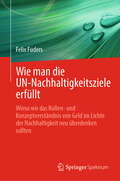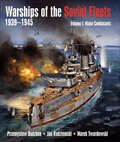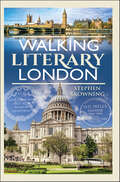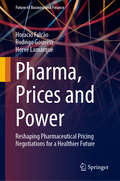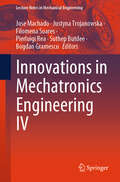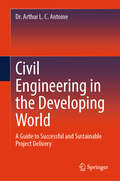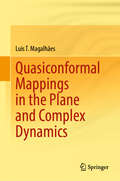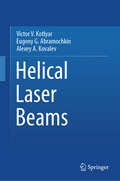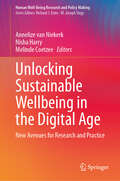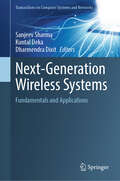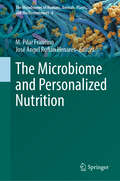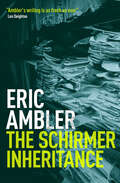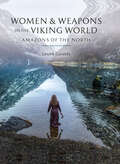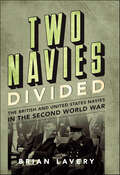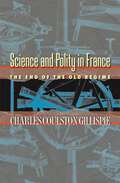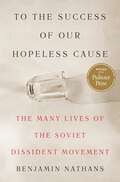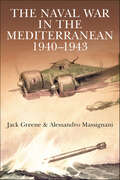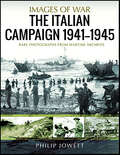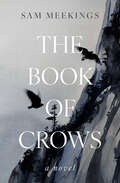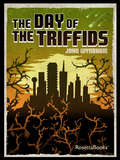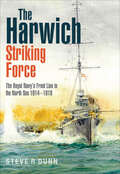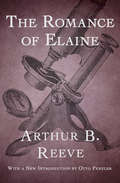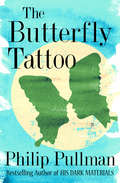- Table View
- List View
Wie man die UN-Nachhaltigkeitsziele erfüllt: Wieso wir das Rollen- und Konzeptverständnis von Geld im Lichte der Nachhaltigkeit neu überdenken sollten
by Felix FudersDieses Buch kombiniert das Gebiet der Wirtschaftswissenschaften – insbesondere die Geldtheorie – mit anderen Disziplinen wie Ökologie, Physik, Geistes- und Sozialwissenschaften und Entwicklungstheorie. Dieser transdisziplinäre Ansatz macht das Buch zu einem einzigartigen Beitrag für Forscher, Studierende, politische Entscheidungsträger und Fachleute, die in staatlichen oder nichtstaatlichen Institutionen tätig sind, sowie allgemein für alle, die am Wohlergehen der Gesellschaft und an einer echten sozial-ökologischen Transformation interessiert sind. Es ist in einer verständlichen Sprache verfasst, um ein breites Publikum zu erreichen. Im Jahr 2015 erkannten mehr als 190 Staats- und Regierungschefs, dass sich die Welt auf einem „Kollisionskurs“ (Max-Neef) befindet, und verpflichteten sich zu 17 Zielen für nachhaltige Entwicklung (SDGs). Seitdem wurden zahlreiche Konferenzen und hochrangige Treffen abgehalten, und eines der am häufigsten diskutierten Themen ist die Finanzierung dieser Ziele. Es herrscht die weit verbreitete Überzeugung, dass mehr Geld für nachhaltige Entwicklung „die Lösung“ sein würde. Üblicherweise konzentrieren sich die Diskussionen darauf, zusätzliche finanzielle Ressourcen zu finden, um die Ziele schneller zu erreichen. In diesem Buch wird argumentiert, dass nicht nur mehr Geld benötigt wird, sondern dass es eine andere Art von Geld sein muss. Das Buch zeigt, dass ALLE, bis auf eines der SDGs, direkt mit unserem Geldsystem verbunden sind, welches – da es vollkommen unnatürlich ist – als der wichtigste, aber gleichzeitig am wenigsten erkannte Grund für das Versagen der Märkte angesehen werden kann. Viele Menschen denken, wir müssen einfach immer mehr, schneller und besser machen. Sehr wenige sagen, dass wir die Dinge grundlegend falsch gemacht haben und dass die Institutionen und Werte, die uns motiviert haben, diese Dinge zu tun, geändert werden müssen. Es wird zu dem Schluss gekommen werden, dass wir nur dann in der Lage sein werden, diese Ziele zu erreichen, wenn wir unser unnatürliches Design von Geld in ein natürlicheres umwandeln.
Warships of the Soviet Fleets 1939–1945: Volume 1: Major Combatants
by Przemyslaw Budzbon Jan Radziemski Marek TwardowskiSeventy-five years after the end of the Second World War the details of Soviet ships, their activities and fates remain an enigma to the West. In wartime such information was classified and after a brief period of glasnost (‘openness’) the Russian state has again restricted access to historical archives. Therefore, the value – and originality – of this work is difficult to exaggerate. It sees the first publication of reliable data on both the seagoing fleets and riverine flotillas of the Soviet Navy, listing over 6200 vessels from battleships to river gunboats, and mercantile conversions as well as purpose-built warships. Divided into three volumes, this first covers major surface warships down to MTBs and armored gunboats, as well as submarines. For every class there is a design history analyzing strategic, tactical and technical considerations, and individual ship detail includes construction yard, key building dates, commissioning, fleet designations, relocations and ultimate fate. Once a closely guarded secret, the wartime loss of every ship and boat (over 1000) is described. Furthermore, the confusion caused by frequent name changes is clarified by indexes that run to 16,000 items. By following the ships through both their wartime and earlier history, the book reveals many aspects of Russian history that remain highly sensitive: clandestine co-operation with Weimar Germany and fascist Italy, the NKVD-enforced closure of Soviet borders, the ‘Gulag Fleet’, the faked Metallist sinking that excused the military occupation of Estonia, and the ill-conceived pact with Nazi Germany. Restrictions recently imposed on historical publications in Russia mean this book could certainly not have been published there – as proven by the fact that most of the authors' Russian collaborators preferred not to disclose their identities. This is undoubtedly one of the most important naval reference works of recent years and will be welcomed by anyone with an interest in warships, the Soviet Navy or wider maritime aspects of the Second World War.
Walking Literary London
by Stephen Browning"Meant for travelers and general readers, this book belongs to adventurers of all sorts, whether on the road or in their minds." - Library JournalLondon possesses a literary heritage which is unique and in large part unrivalled in any city in the world. In this book, literary London is presented through its authors and literature: William Shakespeare, Andrea Levy, G.A. Henty, Geoffrey Chaucer, P.L. Travers, Samuel Pepys, Sherlock Holmes, Charles Dickens, Una Marson, Joe Orton, John Keats, Percy Bysshe Shelley, Phillis Wheatley, Abdulrazak Gurnah, Katherine Mansfield, Harry Potter and Samuel Selvon to name just a very few. The text takes the reader on a series of walks, each of which is original and unique, the result of twenty years’ exploration of this wonderful city by the author. Detailed maps have been specially commissioned. The text is accompanied by over 80 original photographs taken by the author. In these pages you will find the details of hundreds of writers and their works; wherever you walk in the great city of London – even if solely in imagination from an armchair - the experience is going to be extraordinary.
Pharma, Prices and Power: Reshaping Pharmaceutical Pricing Negotiations for a Healthier Future (Future of Business and Finance)
by Horacio Falcão Rodrigo Gouveia Hervé LamarqueThis book brings a negotiation perspective to healthcare. It opens the hidden box of pricing and reimbursement (P&R) negotiations, showing their huge impact on global healthcare systems and how they could be drastically improved. The authors offer a comprehensive and unique negotiation-based analysis of healthcare systems worldwide, highlighting the historical, structural, and ethical challenges that shape P&R negotiations. From the role of governments and health insurers to the intricate dynamics between healthcare providers and users, the authors examine the forces driving healthcare costs and access. With a unique blend of theoretical expertise and practical experience, the authors propose a paradigm shift toward value-oriented negotiations. They show how to move away from adversarial win-lose tactics to collaborative and transparent negotiations.
Innovations in Mechatronics Engineering IV (Lecture Notes in Mechanical Engineering)
by Filomena Soares Justyna Trojanowska Jose Machado Pierluigi Rea Bogdan Gramescu Suthep ButdeeThis book reports on innovations and engineering achievements of industrial relevance, with a special emphasis on developments in mechatronics, control engineering and signal processing. It gathers peer-reviewed papers presented at the 4th International Conference &“Innovation in Engineering&”, ICIE 2025, held on June 18-20, 2025, in Prague, Czech Republic. It covers advances in automated detection and monitoring systems, industrial applications of machine learning and artificial neural networks, and industrial robots and medical devices, among other topics. This second volume of a three-volume set provides engineering researchers and professionals with a timely snapshot of technologies and strategies that should help improve production efficiency, industrial sustainability, and human well-being.
Civil Engineering in the Developing World: A Guide to Successful and Sustainable Project Delivery
by Dr. Arthur L. C. AntoineThis book provides a pragmatic roadmap for mastering project delivery in civil and infrastructure engineering—one that applies across both developing and industrialized nations. Dr. Arthur L.C. Antoine, an experienced civil engineer, project manager, and researcher, blends real-world case studies with empirical data to scrutinize current project delivery methods and performance. With a focus on the foundational pillars of schedule, cost, and quality—alongside the critical but often overlooked elements of procurement and risk—this book offers a fresh perspective for industry professionals, policymakers, and stakeholders. Through practical insights and rigorous analysis, Dr. Antoine challenges conventional approaches, highlights global best practices, and presents actionable recommendations for delivering infrastructure projects that are successfully delivered with a focus on long-term transformation. The book is ideal for engineers, project managers, public works leaders, and anyone invested in the future of infrastructure development.
Innovations in Industrial Engineering IV (Lecture Notes in Mechanical Engineering)
by Justyna Trojanowska Jose Machado Lucia Knapcikova Katarzyna Antosz Celina P. Leão Alexandru SoverThis book reports on innovations and engineering achievements of industrial relevance, with a special emphasis on industrial engineering developments aimed at improving the quality of processes and products in the context of a sustainable economy. It gathers peer-reviewed papers presented at the 4th International Conference &“Innovation in Engineering&”, ICIE 2025, held on June 18-20, 2025, in Prague, Czech Republic. All in all, this third volume of a three-volume set provides engineering researchers and professionals with a timely snapshot of technologies and strategies that should help shaping different industrial sectors to improve production efficiency, industrial sustainability, and human well-being.
Quasiconformal Mappings in the Plane and Complex Dynamics
by Luis T. MagalhãesThis book comprehensively explores the foundations of quasiconformal mappings in the complex plane, especially in view of applications to complex dynamics. Besides playing a crucial role in dynamical systems these mappings have important applications in complex analysis, geometry, topology, potential theory and partial differential equations, functional analysis and calculus of variations, electrostatics and nonlinear elasticity . The work covers standard material suitable for a one-year graduate-level course and extends to more advanced topics, in an accessible way even for students in an initial phase of university studies who have learned the basics of complex analysis at the usual level of a rigorous first one-semester course on the subject. At the frontier of complex analysis with real analysis, quasiconformal mappings appeared in 1859-60 in the cartography work of A. Tissot, well before the term “quasiconformal” was coined by L. Ahlfors in 1935. The detailed study of these mappings began in 1928 by H. Grötzsch, and L. Ahlfors’ seminal work published in 1935 significantly contributed to their development and was considered for awarding him the Fields Medal in 1936. The theory further evolved in 1937 and 1939 with O. Teichmüller’s contributions, and subsequent advancements are partially covered in this book. Organized into ten chapters with eight appendices, this work aims to provide an accessible, self-contained approach to the subject and includes examples at various levels and extensive applications to holomorphic dynamics. Throughout the text, historical notes contextualize advancements over time. A sequel to the author’s previous book, ‘Complex Analysis and Dynamics in One Variable with Applications,’ also published by Springer, this volume might be suitable for students in mathematics, physics, or engineering. A solid background in basic mathematical analysis is recommended to fully benefit from its content.
Helical Laser Beams
by Victor V. Kotlyar Alexey A. Kovalev Eugeny G. AbramochkinThis book discusses helical Ince-Gaussian beams, which are presented as expansions in Hermite-Gaussian modes, and analytical expressions for the orbital angular momentum are obtained for them. In scalar optics, light is described by a complex amplitude, a complex function of three Cartesian coordinates. This function must be a solution to the scalar paraxial Helmholtz equation, which is equivalent to the Schrödinger equation in quantum mechanics. There are not many known exact analytical solutions of this equation in the form of special functions, only a few dozen. Each such solution can be associated with a certain laser beam, for example, a Bessel, Laguerre-Gaussian or Hermite-Gaussian beam. Each such analytical solution of the Helmholtz equation allows one to fully describe all the features of the light beam before modeling. Find the intensity distribution at any distance from the waist, phase distribution, total beam power and its other characteristics. Therefore, the search for new analytical solutions describing new laser beams, including helical (vortex) beams, which have orbital angular momentum and topological charge, is relevant. This book describes new helical beams that the authors obtained in 2023-2024. These are generalized asymmetric Laguerre-Gaussian and Hermite-Gaussian beams, double and square Bessel-Gaussian and Laguerre-Gaussian beams, and several types of Bessel-Bessel-Gaussian beams. Each such new analytical solution of the Helmholtz paraxial equation is a significant contribution to optics. The book is of interest to a wide range of scientists and engineers working in the field of optics, photonics, laser physics, opto-information technologies and optical instrumentation. It can also be useful for bachelors and masters in the specialties applied mathematics and physics, applied mathematics and informatics, optics and graduate students specializing in these areas.
Unlocking Sustainable Wellbeing in the Digital Age: New Avenues for Research and Practice (Human Well-Being Research and Policy Making)
by Melinde Coetzee Annelize Van Niekerk Nisha HarryThis volume includes global and interdisciplinary reflections for innovative solutions to facilitate wellbeing in the digital age, at individual, team and organisational levels. It provides new perspectives, strategies, theories and practices through analyses of multidisciplinary wellbeing research in different contexts influenced by the unprecedented era of technological advancement. It features insights into sustaining human-centric wellbeing across four streams of thought: Gauging psychosocial wellbeing risks in the age of digital transformation Balancing the technostress epidemic Overcoming technophobia: building tech confidence and competence Nurturing a culture of human-centric digital wellbeing This volume includes empirical evidence and cases across sectors and provides scholars and practitioners with useful frameworks and resources to unlock human and workplace wellbeing.
Next-Generation Wireless Systems: Fundamentals and Applications (Transactions on Computer Systems and Networks)
by Sanjeev Sharma Kuntal Deka Dharmendra DixitThe book examines various performance analysis metrics related to next-generation wireless communication technologies and their potential use cases. It presents the material in straightforward language to facilitate easy comprehension and ensure that readers gain a deep understanding of the topics covered. Additionally, the book delves into the role of deep learning and machine learning in designing smart wireless systems. A wide array of subjects is explored, including technical advancements, potential applications, and practical use cases. The book highlights the possible impact of these technologies on various industries, such as healthcare, transportation, and education, and discusses real-world scenarios and case studies to provide practical insights into their implementation. With a future-oriented perspective, the book considers the potential of emerging wireless communication technologies, including 6G, and their anticipated influence on society and the economy. It offers readers an outlook on the latest developments and trends in wireless communication technologies, helping them stay ahead of the curve and prepare for what lies ahead. This volume serves as a valuable resource for researchers, engineers, students, and professionals in the field of wireless communication, as well as policymakers and regulators interested in the advancement of wireless technologies.
Going to War with the Other: A Study of U.S. Foreign Policies of Violence
by Evan O. RenfroThe objective of this book was to use Edward Said's theory Orientalism in order to increase our understanding of such how and why the United States goes to war in the manner in which it has and does. I examined all cases of United States foreign policies of overt violence, bounded by and including, Vietnam (1964-1969) and Iraq (2003-2007). What this research showed was quite contrary to Orientalism’s expectations (as well as my own). Analyzing the discursive record for the “trigger words” that should be present if Orientalist frames were used in the making/applying of US foreign policy resulted in conclusions that are not only largely unsupportive, but in some cases detrimental to the theory. While I cannot categorically deny the existence of any supportive evidence for Orientalism, there is clearly no extant pattern of such ideological discourse in any examined cases. The only exception to this is germane to the last case study, Afghanistan (2001-2003). In this case, I argued that what we are seeing is an outlier, created by a sui generis action, viz., a traumatizing terrorist attack on US soil. Instead of Orientalism, what the record shows are examples of what I’ve termed “neutral-Orientalism” and “anti-Orientalism.” The former are cases where Orientalist trigger words are present in the discourse, but they do only prosaic duty. Such lexical choices are a-ideological, often providing definitional work in the contexts considered. “Anti-Orientalism,” which is actually more common than Orientalism, is when the trigger words work in precisely the opposite way from which the theory would suggest. The evidence uncovered in this book suggests a renewed caution when dealing with questions of Orientalism, and a more robust consideration of the empirical record.
The Microbiome and Personalized Nutrition (The Microbiomes of Humans, Animals, Plants, and the Environment #6)
by M. Pilar Francino José Ángel Rufián HenaresThis book provides an ample overview of the current state of research on nutrition's influence on the human microbiome and how it can be leveraged in personalized diets. It covers the most relevant perspectives in this burgeoning and interdisciplinary field of research, ranging from how foods and food supplements can be used to modulate the gut microbiome, to the role of large-scale food information initiatives in raising public awareness of this topic. Particular attention is paid to the impact of food processing and preparation methods on the modulation of the gut microbiota, a yet understudied area, which is crucial for the development of sophisticated personalized nutrition programs. In addition, the book addresses important societal aims, such as that of recycling agricultural products for the food industry with the specific goal of targeting the gut microbiome for better health. The role of microbiome-aware nutrition in the context of important diseases of the 21st century such as obesity and allergy, especially in the case of children, is also discussed. Moreover, the authors explore the potential contributions of metabolic modelling to guide dietary interventions for microbiota modulation, as well as strategies on how all this information can be incorporated into dietary applications targeting consumers interested in improving their microbiome and health. The book addresses researchers from academia and industry interested in the relationship and interplay between the gut microbiome, individual nutrition and health.
The Schirmer Inheritance
by Eric AmblerA lawyer unearths deadly secrets reaching back to the Napoleonic era in this “masterful contribution to the literature of international dirty work” (The New Yorker).Former WWII bomber pilot George Cary has a promising postwar career ahead of him as a newly minted lawyer, though his first assignment at his prestigious Philadelphia law firm isn’t exactly glamorous. He’s been tasked with going through the copious, dusty files on the Schneider Johnson case, in which the search for an heir to a family fortune yielded no results.When Cary discovers something despite the dead ends and false claims, it leads him to Europe where he begins to unravel a twisting, secret history. Soon, Cary is drawing connections between a deserter from Napoleon’s defeated army to a guerrilla fighter in post-war Greece. Determined to pursue the whole truth, Cary finds himself in a dangerous situation where survival depends more on his military experience than anything he learned in law school.
Women and Weapons in the Viking World: Amazons of the North
by Leszek GardelaThe Viking Age (c. 750–1050 AD) is conventionally seen as a tumultuous time when hordes of fierce warriors from Scandinavia wreaked havoc across the European continent and when Norse merchants travelled to distant corners of the world in pursuit of slaves, silver, and exotic commodities. Until relatively recently, archaeologists and textual scholars had the tendency to weave a largely male-dominated image of this pivotal period in world history, dismissing or substantially downplaying women's roles in Norse society. Today, however, there is ample evidence to suggest that many of the most spectacular achievements of Viking Age Scandinavians - for instance in craftsmanship, exploration, cross-cultural trade, warfare and other spheres of life - would not have been possible without the active involvement of women. Extant textual sources as well as the perpetually expanding corpus of archaeological evidence thus demonstrate unequivocally that both within the walls of the household and in the wider public arena women’s voices were heard, respected and followed. This pioneering and lavishly illustrated monograph provides an in-depth exploration of women's associations with the martial sphere of life in the Viking Age. The multifarious motivations and circumstances that led women to engage in armed conflict or other activities whereby weapons served as potent symbols of prestige and empowerment are illuminated and interpreted through an interdisciplinary approach to medieval literature and archaeological evidence from Scandinavia and the wider Viking world. Additional cross-cultural excursions into the lives and legends of female warriors in other past and present cultural milieus - from the Asiatic steppes to the savannas of Africa and European battlefields - lead to a nuanced understanding of the idea of the armed woman and its embodiments in Norse literature, myth and archaeological reality.
Two Navies Divided: The British and United States Navies in the Second World War
by Brian LaveryThe title is derived from George Bernard Shaw’s comment that ‘England and America are two countries divided by a common language.’ It is not intended to imply that the two navies were seriously at odds with one another, but rather to suggest, as in the case of language, that common roots and usages varied significantly. And the Second World War is a pertinent moment for comparison. They fought on the same side against a common enemy for nearly four years, but Britain fought the war for the survival of itself and its empire, though in the long term it failed with the latter, while the American government fought to maintain its influence through the balance of power; its people fought for revenge for Pearl Harbor, and out of a sense of justice. In this new book, Brian Lavery describes and analyzes the differences and similarities between the two navies and in doing so sheds fascinating light on how the naval war was fought. For example, both navies had spectacular failures after entering the war – the Royal Navy off Norway, the USN at Pearl Harbor and Savo Island. Paradoxically, both commenced the war with quite amateur performances by professional navies and ended with highly skilled performances by largely amateur manned forces. The training systems for regular officers had flaws in both countries. In Britain, entry was largely dependent on family income, in America, on political influence. But American officers probably had a broader perspective by the time they entered active service. The book covers ships and weapons systems – for instance, the British used too many gun types in the 4 to 6in range, while the Americans concentrated on the well-designed 5in. And the author describes conditions onboard ships. British vessels were awash with alcohol, which had its attractions for Americans when alongside; the Americans offered ice cream in return. These examples represent only a tiny proportion of the subjects covered in this stimulating analysis. Aviation, the marines of both navies, anti-submarine and mine warfare, uniforms, propulsion systems, shipbuilding and building programs, commanders and national leaders, ratings and officers, ship design, geographical environments, naval bases, hammocks and bunks, the deployment of women – these are among the myriad big and small themes that will open the eyes of naval historians and enthusiasts, and show anyone with an interest in the Second World War how these two great allies came together to defeat the Axis forces.
Science and Polity in France: The End of the Old Regime
by Charles Coulston GillispieBy the end of the eighteenth century, the French dominated the world of science. And although science and politics had little to do with each other directly, there were increasingly frequent intersections. This is a study of those transactions between science and state, knowledge and power--on the eve of the French Revolution. Charles Gillispie explores how the links between science and polity in France were related to governmental reform, modernization of the economy, and professionalization of science and engineering.
To the Success of Our Hopeless Cause (Pulitzer Prize Winner): The Many Lives of the Soviet Dissident Movement
by Benjamin NathansWINNER OF THE 2025 PULITZER PRIZEWinner of the Pushkin House Russian Book PrizeA "riveting history" (Wall Street Journal) of the Soviet dissident movement, which hastened the end of the USSR and still provides a model of opposition in Putin&’s Russia—and beyond&“A book about a past time that is very much a book for our time. . . . A story from which we all stand to learn as we face a new wave of authoritarianism.&”—Los Angeles Review of BooksBeginning in the 1960s, the Soviet Union was unexpectedly confronted by a dissident movement that captured the world&’s imagination. Demanding that the Kremlin obey its own laws, an improbable band of Soviet citizens held unauthorized public gatherings, petitioned in support of arrested intellectuals, and circulated banned samizdat texts. Soviet authorities arrested dissidents, subjected them to bogus trials and vicious press campaigns, sentenced them to psychiatric hospitals and labor camps, sent them into exile—and transformed them into martyred heroes. Against all odds, the dissident movement undermined the Soviet system and hastened its collapse. Taking its title from a toast made at dissident gatherings, To the Success of Our Hopeless Cause is a definitive history of a remarkable group of people who helped change the twentieth century.Benjamin Nathans&’s vivid narrative tells the dramatic story of the men and women who became dissidents—from Nobel laureates Andrei Sakharov and Alexander Solzhenitsyn to many others who are virtually unknown today. Drawing on diaries, memoirs, personal letters, interviews, and KGB interrogation records, To the Success of Our Hopeless Cause reveals how dissidents decided to use Soviet law to contain the power of the Soviet state. This strategy, as one of them put it, was &“simple to the point of genius: in an unfree country, they began to conduct themselves like free people.&”An extraordinary account of the Soviet dissident movement, To the Success of Our Hopeless Cause shows how dissidents spearheaded the struggle to break free of the USSR&’s totalitarian past, a struggle that continues in Putin&’s Russia—and that illuminates other struggles between hopelessness and perseverance today.
The Naval War in the Mediterranean, 1940–1943
by Jack Greene Alessandro MassignaniThis superbly researched book gives a complete account of the war in the Mediterranean on, above and beneath the sea up until Italy's armistice in September 1943. Written with full access to Italian sources, it not only provides a detailed and fascinating narrative of the entire naval war, but also sets the individual actions fully in their strategic context for both the Axis and the Allies. Topics include: • The complex and distrustful relationship between the Italians and their German allies which culminated in open conflict after the Italian armistice in 1943. • The battle for Malta, and that island's vital strategic role threatening Axis supply lines to North Africa. • The exploits of the Italian human torpedoes of the X MAS flotilla, which threatened to change the balance of power in the Mediterranean. This book is essential reading for all those interested in one of the major naval theaters of the Second World War.
The Italian Campaign, 1943–1945 (Images of War)
by Philip JowettThe Second World War Italian campaign is often less well remembered than the struggle of the Germans against the western Allies in north-west Europe and against the Soviet Union in the east. But, as this book demonstrates in over 300 photographs, the Italian peninsula was a major theater of the war in itself. More than a million Allied troops fought there, more than half a million Germans and Italians; there were over 600,00 casualties and well over 100,000 dead. The soldiers of many nations took part – Americans, Australians, Brazilians, British, Canadians, French, Germans, Greeks, Indians, Italians, Poles, South Africans – in a grueling and protracted sequence of battles across rocky, mountainous terrain that made a mockery of Churchill’s description of it as the ‘soft underbelly’ of occupied Europe. Every stage of the campaign is represented in the photographs – from the Allied landings in Sicily in 1943, through the tenacious defense by the Germans of a series of fortified lines as the Allies struggled north, to the final Allied advance across the Po in April 1945 and the German surrender. As well as showing the soldiers on all sides and the towns and Italian landscapes in which the fighting took place, the photographs record the appalling devastation the warfare left in its wake.
The Book of Crows: A Novel
by Sam MeekingsIn his second novel, the acclaimed author of Under Fishbone Clouds reaches across Chinese history with lyrically interwoven tales of human longing. It is said that the Book of Crows contains the entire history of the world—past, present, and future. Equally sought after and feared, this mysterious book touches lives both high and low, young and old, ancient and modern. In a series of narratives spanning millennia, author Sam Meekings conjures a tale both epic and intimate. When a teenage girl is abducted, she soon finds herself facing a new life in a remote mountain brothel. Thousands of years later, a humble bureaucrat must search for a missing colleague in the rubble from a devastating landslide. While travelling the Silk Road, a medieval Franciscan monk offers shocking revelations in the form of a deathbed confession. And a Chinese poet must put grief aside to answer a call to the Emperor&’s palace. Each of them will in some way feel the powerful influence of the Book of Crows.
The Day of the Triffids (Popular Penguins Series #Vol. 10)
by John WyndhamThe classic postapocalyptic thriller with &“all the reality of a vividly realized nightmare&” (The Times, London). Triffids are odd, interesting little plants that grow in everyone&’s garden. Triffids are no more than mere curiosities—until an event occurs that alters human life forever. What seems to be a spectacular meteor shower turns into a bizarre, green inferno that blinds everyone and renders humankind helpless. What follows is even stranger: spores from the inferno cause the triffids to suddenly take on a life of their own. They become large, crawling vegetation, with the ability to uproot and roam about the country, attacking humans and inflicting pain and agony. William Masen somehow managed to escape being blinded in the inferno, and now after leaving the hospital, he is one of the few survivors who can see. And he may be the only one who can save his species from chaos and eventual extinction . . . With more than a million copies sold, The Day of the Triffids is a landmark of speculative fiction, and &“an outstanding and entertaining novel&” (Library Journal). &“A thoroughly English apocalypse, it rivals H. G. Wells in conveying how the everyday invaded by the alien would feel. No wonder Stephen King admires Wyndham so much.&” —Ramsey Campbell, author of The Overnight &“One of my all-time favorite novels. It&’s absolutely convincing, full of little telling details, and that sweet, warm sensation of horror and mystery.&” —Joe R. Lansdale, author of Edge of Dark Water
The Harwich Striking Force: The Royal Navy's Front Line in the North Sea 1914–1918
by Steve DunnThe Harwich Force has made its name and will not be forgotten during the future annals of history’; so said Rear Admiral Sir Reginald Tyrwhitt on Armistice Day 1918. But that fame has not endured. Yet for the whole duration of the First World War, the Harwich Striking Force was the front line of the Royal Navy, a force of cruisers and destroyers defending the seas for the Allies. Under a charismatic and aggressive leader, Reginald Yorke Tyrwhitt, U-boats, German cruisers, destroyers and light craft all met their ends at the hands of the Force, as did enemy seaplanes and Zeppelin airships. The Harwich ships were at sea almost daily throughout the war, haunting the German coast and the Friesian Islands, pioneering aerial attack from the sea, developing naval carrier aviation and combined air/sea operations, and hunting for enemy submarines and minelayers in the North Sea. The Harwich Force also took part in major naval battles alongside the Grand Fleet’s battlecruisers, and protected merchant ships operating in the dangerous waters around Denmark, the Netherlands, Germany and Britain. The author also assesses the role played by the other Royal Navy formations at Harwich: submarines, auxiliary minesweeping and patrol vessels, the Felixstowe seaplane base and the town itself. And when the war was finally won, the Force gained further fame when the German U-boat fleet was surrendered there. Lavishly illustrated, this book is an enthralling account of the men of the Harwich Force, of their grit and brave sacrifice and the key part that they played in the final Allied victory against Germany.
The Romance of Elaine
by Arthur B. ReeveThe American Sherlock Holmes and his favorite damsel in distress star in this sensational sequel to The Exploits of Elaine After supersleuth Craig Kennedy rescues her from a death trap devised by the villain known as the Clutching Hand, Elaine Dodge hopes for some peace and quiet. That is not to be, however, as the search for the Hand&’s hidden millions leads Professor Kennedy; his loyal sidekick, Walter Jameson; and Elaine straight into the crosshairs of the diabolical Mr. X. To save Elaine and uncover the identity of his latest arch nemesis, Kennedy must bring every ounce of his keen intellect and audacious courage to bear on this mystifying case. First appearing in the pages of Cosmopolitan magazine, Craig Kennedy was one of the most popular detectives of the early twentieth century. The Exploits of Elaine was the basis for a popular film serial starring Pearl White and Lionel Barrymore. This ebook features a new introduction by Otto Penzler and has been professionally proofread to ensure accuracy and readability on all devices.
The Butterfly Tattoo
by Philip PullmanYoung love has tragic, violent consequences in this &“grippingly readable&” thriller from the #1 bestselling author of La Belle Sauvage (Times Educational Supplement).Chris Marshall met the girl he was going to kill on a warm night in early June . . . Working at an Oxford ball, Chris falls in love with Jenny the moment he sets eyes on her. When beautiful, secretive Jenny rushes headlong into his life, it seems fate has brought them together. But fate will also drive them mercilessly apart, as enemies hidden in the shadows send the innocent affair spiraling down a dark road of danger, revenge, and betrayal. Chris is about to discover that his ideals of honesty and trust are more complicated than he thought. With Northern Lights and its sequels, The Subtle Knife and The Amber Spyglass, Carnegie Medal–winning author Philip Pullman established himself as a multimillion-copy bestselling phenomenon whose work speaks deeply to all ages. This contemporary novel, first published as The White Mercedes, tells the suspenseful story of a teenage romance with profound moral implications.
